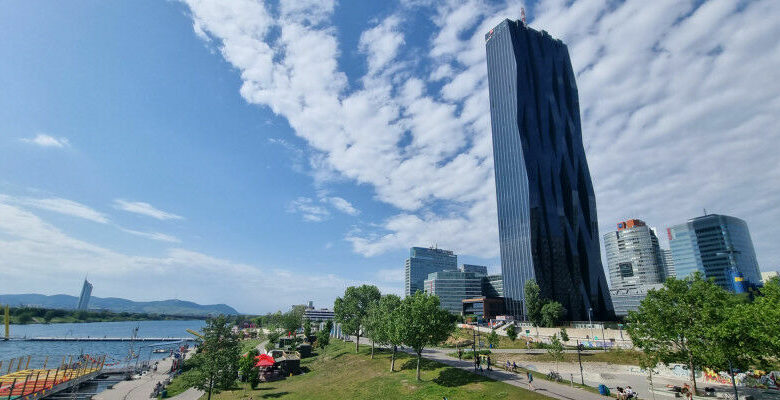Analysis group displays vital infrastructure the use of navigation satellites

Researchers at Graz College of Era have advanced a unutilized measuring machine that may track the static and dynamic status of structures the use of only some antennas.
From the out of doors, the Kölnbrein Dam in Carinthia, which is operated via Verbund and is Austria’s absolute best dam, and the DC Tower in Vienna, Austria’s absolute best development, wouldn’t have a lot in usual, however for a analysis workforce led via Caroline Schönberger and Werner Lienhart from the Institute of Engineering Geodesy and Dimension Techniques at TU Graz, they’re of equivalent medical pastime. Through taking measurements on those two structures, the group used to be ready to build a satellite-based form for the static and dynamic tracking of vital infrastructure as a part of the InfraHealth undertaking.
This makes it conceivable no longer most effective to trace gradual deformations that happen because of adjustments within the reservoir stage of a dam wall, as an example, the use of static measurements. Dynamic measurements can be worn to file development vibrations and stumble on harm or alternative vital adjustments in line with deviations. Up to now, other forms needed to be worn for static and dynamic measurements. The unutilized form additionally permits steady tracking even all the way through rainfall, blizzard, fog or storms.

Distinctive accuracy
“The high level of accuracy that we were able to achieve with the measurements in the InfraHealth project funded by the Austrian government is almost unique,” says undertaking supervisor Caroline Schönberger from the Institute of Engineering Geodesy and Dimension Techniques at TU Graz. “We can record vibrations in the millimeter range or even below with satellites that are around 20,000 kilometers away from us. This project paves the way for the large-scale use of global navigation satellite systems (GNSS) for static and dynamic monitoring of critical infrastructure and thus for continuous monitoring of its safety, independent of environmental influences. This benefits not only building operators, but also their users.”
This unutilized measuring form makes use of native antennas and the publicly available GNSS indicators from Galileo and GLONASS satellites. The antennas are hooked up to related measuring issues at the construction, year every other, so-called reference antenna is situated fairly similar via on solid field. The antennas utility the satellites to resolve their place, for dynamic dimension each and every 0.05 seconds, i.e. at a frequency of 20 Hertz. Satellite tv for pc and Galileo indicators have confirmed their virtue right here, because the antennas can file their place extra reliably. The researchers utility this recorded uncooked knowledge to calculate the frequency reaction of the construction.

Making plans with digital truth
Static dimension is extra comfortable, because the dimension analysis has a set interlude this is at all times longer than one 2d – it can be one generation or one time. Right here, the mix of all 3 GNSS methods produced the most productive effects, with GLONASS being added to Galileo.
To safeguard in journey that the antennas would have touch with the satellites on the measuring issues supposed for them, the analysis group advanced a device that allowed them to hold out all the making plans in digital truth. On the Kölnbreinsperre, the group enthusiastic in journey that no longer most effective the 2 antennas within the heart and midway to the threshold of the wall would be capable to obtain ample satellite tv for pc indicators, but additionally on the very edge. The transition to cast landscape is especially noteceable when tracking dams.

Earthquake deliberate 550 kilometers away
Rather of six antennas, the group most effective wanted two on the DC Tower: one to measure the development frequency and one to test whether or not the development additionally twists because of exterior influences comparable to breeze. Throughout the exams there, it turned into sunny how correctly the unutilized form can stumble on adjustments. Throughout the sequence of measurements, the researchers had been ready to file the foothills of an earthquake round 550 kilometers away in northern Italy in line with the actions of the tower. The quake with a magnitude of five.7 at the Richter scale befell on November 9, 2022 at 7:07 a.m. Central Ecu Date close the Adriatic coast northwest of Ancona. Earthquake waves propagate at round 3 kilometers according to 2d, in order that they exit round 540 kilometers in 3 mins and at 7:10 a.m. there used to be a corresponding deflection on the DC Tower.
Werner Lienhart, Head of the Institute of Engineering Geodesy and Dimension Techniques at Graz College of Era, provides: “The combination of static and dynamic monitoring of infrastructure in one measuring system makes it possible to gain an in-depth understanding of the current state of health of a structure. This is particularly important for large engineering structures such as bridges or dams that are approaching the end of their planned service life.”
Companions of TU Graz within the InfraHealth undertaking had been: Verbund Hydro Energy GmbH, Leica Geosystems Austria GmbH, Situation Competence Community Austria , pentamap GmbH
This analysis undertaking is anchored within the Grassland of Experience “Information, Communication & Computing”, one in every of 5 strategic focal point fields at TU Graz.






